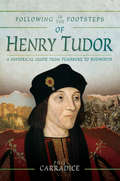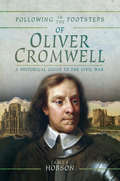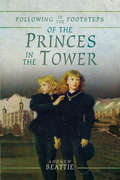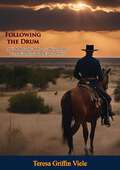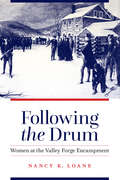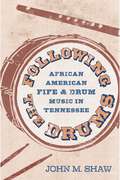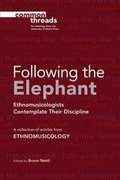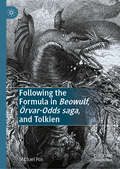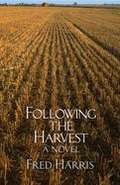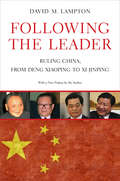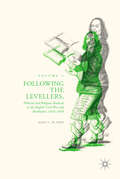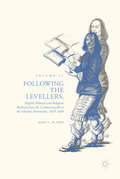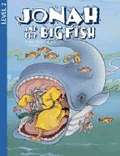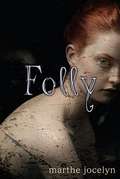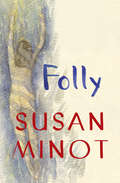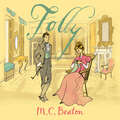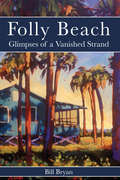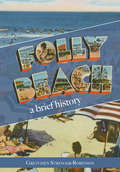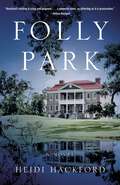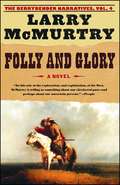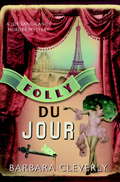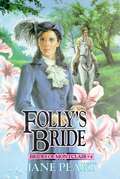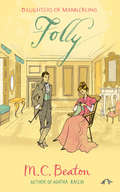- Table View
- List View
Following in the Footsteps of Henry Tudor: A Historical Journey from Pembroke to Bosworth (Following In The Footsteps Ser.)
by Phil CarradiceThe story of the first monarch of the House of Tudor, and his dramatic journey to the throne. The story of Henry Tudor&’s march to Bosworth and the throne of England began long before the fateful summer of 1485. Pembroke Castle, the gigantic fortress where he was born in 1457 and spent his childhood years, lay some twelve miles inland from the spot where Henry is believed to have landed in Milford Haven when he came to challenge Richard III in August 1485. Henry&’s landing and progress to Bosworth Field were a gamble, but one that had to be taken if the House of Lancaster was to survive. In Following in the Footsteps of Henry Tudor, we hear of the many fascinating stories from Henry&’s march and the places he visited—a journey that took just over two weeks. It was a time of treachery and double dealing, but it culminated with the establishment of the Tudor dynasty, the end of the Wars of the Roses, and the beginnings of the modern world.
Following in the Footsteps of Oliver Cromwell: A Historical Guide to the Civil War (Following In The Footsteps Ser.)
by James HobsonA unique biography of the military commander and politician who remains one of Britain&’s most controversial figures centuries after his death. One of the most important figures in British history, Oliver Cromwell was both soldier and politician and the only non-Royal ruler of Britain in a thousand years. His actions and ideas still have political and social consequences today, and his legacy still divides people. Love him or loathe him, Cromwell still matters. This book is a history of his life through the places in Britain and Ireland where he lived, visited, ruled, or fought. Following in the Footsteps of Oliver Cromwell begins in Huntingdon in 1599, with the respectable but unimportant Cromwell family living under the shadow of richer relatives. Civil War and Cromwell&’s controversial successes at Marston Moor, Naseby, Basing House, and Worcester transform him into the most powerful person in Britain, saving him from obscurity and moving him from a modest house in Ely to Hampton Court Palace. Cromwell is involved in the execution of King Charles I outside the Banqueting House, his own coronation in Westminster Hall, and bloody slaughter in Ireland. Even his death in 1658 does not end the controversy—as his enemies take revenge on his corpse and the debate about his legacy begins.
Following in the Footsteps of the Princes in the Tower (Following In The Footsteps Ser.)
by Andrew BeattieA journey into the 15th century, as the heir to the throne and his brother are imprisoned in the Tower of London—their fate a mystery to this day. The story of the Princes in the Tower is well known—the grim but dramatic events of 1483, when the twelve-year-old Edward Plantagenet was taken into custody by his uncle, Richard of Gloucester, and imprisoned in the Tower of London along with his younger brother, have been told and retold. The true events of that year remain shrouded in mystery, and the end of the young princes&’ lives are an infamous part of the Wars of the Roses and Richard III&’s reign. Yet little about their lives is commonly known. Following the Footsteps of the Princes of the Tower tells the story in a way that is wholly new: through the places where the events actually unfolded. It reveals the lives of the princes through the places they lived and visited. From Westminster Abbey to the Tower of London itself, and from the remote English castles of Ludlow and Middleham to the quiet Midlands town of Stony Stratford, the trail through some of England&’s most historic places throws a whole new light on this most compelling of historical dramas.
Following the Drum: A U. S. Infantry Officer's Wife on the Texas Frontier in the Early 1850's
by Teresa Griffin Viele“A view of the early Texan frontier from a female view pointTeresa Viele was a strong minded woman with clear cut views. Fate would dictate that her life would not be defined by her experiences as an army wife, but in this book she has left us a significant insight into the activities of the officers, soldiers and families of a United States Infantry regiment on the Texas frontier in the pre-Civil War period. Her account encompasses everything that came under her eye and into her active mind-from travel, landscape, flora, fauna and food. Less domestically, she turned her thoughts and pen to the subject of Mexicans and United States political relations with Mexico, the omnipresent threat of Comanche raiders and the ability and capacity of the army to fulfil its border protection duties. Viele also provides an interesting perspective on Jose Maria Jesus Carbajal and the Merchants War. This is an unusual female viewpoint on life on the early South Western American frontier and is an important chronicle of a woman in Texas during the pioneer period.”-Print ed.
Following the Drum: Women at the Valley Forge Encampment
by Nancy K. LoaneFriday, December 19, 1777, dawned cold and windy. Fourteen thousand Continental Army soldiers tramped from dawn to dusk along the rutted Pennsylvania roads from Gulph Mills to Valley Forge, the site of their winter encampment. The soldiers&’ arrival was followed by the army&’s wagons and hundreds of camp women. Following the Drum tells the story of the forgotten women who spent the winter of 1777–78 with the Continental Army at Valley Forge—from those on society&’s lowest rungs to ladies on the upper echelons. Impoverished and clinging to the edge of survival, many camp women were soldiers&’ wives who worked as the army&’s washers, nurses, cooks, and seamstresses. Other women at the encampment were of higher status: they traveled with George Washington&’s entourage when the army headquarters shifted locations and served the general as valued cooks, laundresses, or housekeepers. There were also the ladies at Valley Forge who were not subject to the harsh conditions of camp life and came and went as they and their husbands, Washington&’s generals and military advisers, saw fit. Nancy K. Loane uses sources such as issued military orders, pension depositions after the war, soldiers&’ descriptions, and some of the women&’s own diary entries and letters to bring these women to life.
Following the Drums: African American Fife and Drum Music in Tennessee (American Made Music Series)
by John M. ShawFollowing the Drums: African American Fife and Drum Music in Tennessee is an epic history of a little-known African American instrumental music form. John M. Shaw follows the music from its roots in West Africa and early American militia drumming to its prominence in African American communities during the time of Reconstruction, both as a rallying tool for political militancy and a community music for funerals, picnics, parades, and dances. Carefully documenting the music's early uses for commercial advertising and sports promotion, Shaw follows the strands of the music through the nadir of African American history during post-Reconstruction up to the form's rediscovery by musicologists and music researchers during the blues and folk revival of the late 1960s and early 1970s. Although these researchers documented the music, and there were a handful of public performances of the music at festivals, the story has a sad conclusion. Fife and drum music ultimately died out in Tennessee during the early 1980s.Newspaper articles from the period and interviews with music researchers and participants reawaken this lost expression, and specific band leaders receive the spotlight they so long deserved. Following the Drums is a journey through African American history and Tennessee history, with a fascinating form of music powering the story.
Following the Elephant: Ethnomusicologists Contemplate Their Discipline
by Bruno NettlIn Following the Elephant, Bruno Nettl edits articles drawn from fifty years of the pioneering journal Ethnomusicology. The roster of acclaimed scholars hail from across generations, using other works in the collection as launching points for dialogues on the history and accomplishments of the field. Nettl divides the collection into three sections. In the first, authors survey ethnomusicology from perspectives that include thoughts on defining and conceptualizing the field and its concepts. The second section offers milestones in the literature that critique major works. The authors look at what separates ethnomusicology from other forms of music research and discuss foundational issues. The final section presents scholars considering ethnomusicology--including recent trends--from the perspective of specific, but abiding, strands of thought. Contributors: Charlotte J. Frisbie, Mieczylaw Kolinski, Gerhard Kubik, George List, Alan P. Merriam, Bruno Nettl, David Pruett, Adelaida Reyes, Timothy Rice, Jesse D. Ruskin, Kay Kaufman Shelemay, Gabriel Solis, Jeff Todd Titon, J. Lawrence Witzleben, and Deborah Wong
Following the Formula in Beowulf, Örvar-Odds saga, and Tolkien
by Michael FoxFollowing the Formula in Beowulf, Örvar-Odds saga, and Tolkien proposes that Beowulf was composed according to a formula. Michael Fox imagines the process that generated the poem and provides a model for reading it, extending this model to investigate formula in a half-line, a fitt, a digression, and a story-pattern or folktale, including the Old-Norse Icelandic Örvar-Odds saga. Fox also explores how J. R. R. Tolkien used the same formula to write Sellic Spell and The Hobbit. This investigation uncovers relationships between oral and literate composition, between mechanistic composition and author, and between listening and reading audiences, arguing for a contemporary relevance for Beowulf in thinking about the creative process.
Following the Harvest: A Novel
by Fred HarrisFollowing the Harvest is the latest novel by award-winning author Fred Harris, and tells the story of sixteen-year-old Will Haley, who journeys north in the summer of 1943 as a member of a wheat-harvesting crew. As the novel opens, Will excitedly prepares to leave behind his small hometown, family, and Saturday-night get-togethers with his friends down at the soda shop and to set out on the road with a cast of unforgettable harvest crew members. Although he is eager to begin his "moveable adventure," Will worries about taking care of his father, a dangerously heavy drinker, as they work their way north together. Traveling with his father, along with a humpbacked hired hand, a whiny truck driver and his pretty wife, two cousins from Mississippi, and his father's best friend, Will makes his way from Vernon, Oklahoma, to Rhame, North Dakota. Along the way he battles field fires and deadly weather, makes an unexpected visit to a house of ill repute, and takes a wild ride at the Frontier Days rodeo in Cheyenne, among other exploits. Will and the crew members work hard and play hard, but tensions run high as Will's father continues to drink heavily and the other crew members face their own demons and dilemmas. Not everyone will make the return trip to Oklahoma, and when an accident claims a crew member's life. Will is forced to take charge and become mature beyond his years. Set against the rich history and wide-open landscape of the Great Plains, Will Haley's coming- of-age story is both a touching and exhilarating read. His odyssey on the high plains is no less than an American epic.
Following the Leader: Ruling China, from Deng Xiaoping to Xi Jinping
by David M. LamptonWith unique access to Chinese leaders at all levels of the party and government, best-selling author David M. Lampton tells the story of China’s political elites from their own perspectives. Based on over five hundred interviews, Following the Leader offers a rare glimpse into how the attitudes and ideas of those at the top have evolved over the past four decades. Here China’s rulers explain their strategies and ideas for moving the nation forward, share their reflections on matters of leadership and policy, and discuss the challenges that keep them awake at night. As the Chinese Communist Party installs its new president, Xi Jinping, for a presumably ten-year term, questions abound. How will the country move forward as its explosive rate of economic growth begins to slow? How does it plan to deal with domestic and international calls for political reform and to cope with an aging population, not to mention an increasingly fragmented bureaucracy and society? In this insightful book we learn how China’s leaders see the nation’s political future, as well as about its global strategic influence.
Following the Levellers, Volume One: Political and Religious Radicals in the English Civil War and Revolution, 1645–1649
by Gary S. De KreyThis book reinterprets the Leveller authorships of John Lilburne, Richard Overton and William Walwyn, and foregrounds the role of ordinary people in petitioning and protest during an era of civil war and revolution. The Levellers sought to restructure the state in 1647-49 around popular consent and liberty for conscience, especially in their Agreement of the People. Their following was not a ‘movement’ but largely a political response of the sects that had emerged in London’s rapidly growing peripheral neighbourhoods and in other localities in the 1640s. This study argues that the Levellers did not emerge as a separate political faction before October 1647, that they did not succeed in establishing extensive political organisation, and that the troop revolt of spring 1649 was not really a Leveller phenomenon. Addressing the contested interpretations of the Levellers throughout, this book also introduces Leveller history to non-specialist readers.
Following the Levellers, Volume Two: English Political and Religious Radicals from the Commonwealth to the Glorious Revolution, 1649–1688
by Gary S. De KreyThe Levellers sought to restructure the state in 1647-9 around popular consent and liberty for conscience, especially in their Agreement of the People. Following the Levellers, Volume Two examines the later political efforts of Leveller spokesmen like John Lilburne, John Wildman, and Richard Overton, and their followers. Far from ending in the 1649 troop revolts, the Leveller impact continued in the Interregnum climacterics of 1653 and 1659-60, times of acute political and religious unsettlement. Indeed, Leveller ideas resurfaced in Restoration political and religious crises in 1678-83 and again in 1687-8 and flourished in populations that once followed the Levellers. Analysis of London, army, and county Levellers reveals connections to subsequent outbursts of unrest. Sectarian communities in London’s peripheral neighbourhoods and nearby counties sustained the Leveller ethos, and ordinary people like those who followed the Levellers remained active in petitioning and protest about political and religious liberties through the Glorious Revolution.
Following the Light: Teachings, Testimonies, Trials, and Triumphs of the Church of God (Anderson) A Documentary History
by Barry L. CallenChronicles the Church of God movement from the 1880's to the present.
Folly
by Marthe JocelynThree fates intertwine in this moving and passionate love story set in Victorian London. Mary Finn: country girl, maid to a lord in London Caden Tucker: liar, scoundrel, and heart's delight James Nelligan: age six, tossed into a herd of boys When Mary Finn falls into the arms of handsome Caden Tucker, their frolic changes the course of her life. What possesses her? She's been a girl of common sense until now. Mary's tale alternates with that of young James Nelligan, a new boy in an enormous foundling home. InFolly, Marthe Jocelyn's breathtaking command of language, detail, and character brings Victorian London to life on every page, while the deep emotions that illuminate this fascinating novel about life-changing moments are as current as today's news.
Folly
by Susan MinotAn upper-class Boston woman struggles through a life constrained by duty in this &“dazzling&” historical novel by a prize-winning author (Chicago Tribune).Born into an affluent New England family at the turn of the twentieth century, Lillian Eliot engages in the coming-of-age rituals traditional of her social status. But when she meets Walter Vail, a charming and spontaneous New Yorker, her world is opened to new possibilities. As the Great War erupts, Walter leaves for Europe and marries another woman, and Lillian marries Gilbert Finch, an innocuous bachelor within her social circle. As the years pass, Lillian acquiesces to a life devoid of passion until, one day, Walter returns. In the tradition of Edith Wharton and E.M. Forster, Susan Minot brings to vivid life the world of the early twentieth century and the story of a woman searching for love despite society&’s constraints.This ebook features a new illustrated biography of Susan Minot, including artwork by the author and rare documents and photos from her personal collection.
Folly (The Daughters of Mannerling Series)
by M.C. BeatonThe haughty Beverley family is obsessed with regaining Mannerling, the exquisite seventeenth-century mansion gambled away by their now-deceased father, Sir Beverley. Three of the six Beverley daughters have failed to win back their ancestral estate - settling for love matches over mere bricks and mortar. Now it is Rachel's turn to woo the latest eligible bachelor-in-residence, handsome widower Charles Blackwood. Yet her plan to win the autocratic Charles almost comes to naught: At their first meeting, Rachel forgets herself and admonishes Charles for neglecting his two small children. The antics of young Beth and Mark Blackwood successfully throw Charles and Rachel together, but does Rachel love Charles for himself or for Mannerling?
Folly Beach: A Brief History
by Gretchen Stringer-RobinsonAsk anyone from Charleston or the surrounding areas, �What do you remember about Folly Beach?� and you will get a remarkable array of answers. For some, Folly Beach is a memory of youthful days of freedom; for others it is where the avant-garde, bohemian types lived. Having hosted plague victims, playwrights and maybe a pirate or two, Folly has had a checkered past.Folly Beach today is a locale for upscale homes and condominiums. In spite of this shift from a blue-collar retreat to a chic destination, Folly has remained Charleston�s wild cousin and hosts more bars and churches per square mile than most American cities five times its size.Folly native Gretchen Stringer-Robinson takes the reader through the war years, the innocence of the fifties, the recession of the seventies, Hurricane Hugo and the times in between. Join Gretchen as she introduces the characters and revisits the places that have made Folly Beach a unique haven on the Carolina coast.
Folly Beach: Glimpses of a Vanished Strand
by Bill BryanAs anyone who has ever crossed over the Folly River onto Center Street can tell you, Folly Beach is a place like no other. For Charleston writer Bill Bryan, Folly is another world that has drawn him back time and again. In Folly Beach: Glimpses of a Vanished Strand, Bryan takes a wistful look back at Folly during a special time in its history, when the dark days of war were over and everyone just wanted to have fun. Through these charming, historical vignettes, enjoy a moonlit dance on the pier, take a ride on the Ferris wheel at the carnival, grab a bite to eat at the Pavilion or comb the Washout for driftwood.
Folly Park: A Novel
by Heidi HackfordFans of Surviving Savannah by Patti Callahan, The Book of Lost Friends by Lisa Wingate, and Almost Sisters by Joshilyn Jackson will enjoy Folly Park.Are we ever able to escape the past? Should we be allowed to?Though deeply ashamed of her slaveholding heritage, Temple Preston’s sense of duty and bittersweet memories tie her to Folly Park, her family’s crumbling ancestral plantation in Virginia. Now a cash-strapped tourist attraction, Folly Park was once the home of Confederate General Thomas Temple Smith, a southern war hero who died under mysterious circumstances. Temple is pursuing a plan to secure the house museum’s future when her summer research assistant, a Black PhD student, uncovers a remarkable secret: the general’s wife gave birth to a biracial baby while he was away fighting in the Civil War. This discovery turns Temple’s quiet, insulated life upside down, and—along with further revelations about the past that come to light in the ensuing weeks—fuels the growing tension in her hometown as a Black activist and Temple’s own race-baiting brother square off in a local campaign for mayor. Faced with threats and betrayal, Temple discovers who she really is—and how much she’s willing to lose to tell the truth.
Folly and Glory: A Novel
by Larry McmurtryIn this brilliant saga -- the final volume of The Berrybender Narratives and an epic in its own right -- Larry McMurtry lives up to his reputation for delivering novels with "wit, grace, and more than a hint of what might be called muscular nostalgia, fit together to create a panoramic portrait of the American West"(The New York Times Book Review). As this finale opens, Tasmin and her family are under irksome, though comfortable, arrest in Mexican Santa Fe. Her father, the eccentric Lord Berrybender, is planning to head for Texas with his whole family and his retainers, English, American, and Native American. Tasmin, who would once have followed her husband, Jim Snow, anywhere, is no longer even sure she likes him, or knows where to go to next. Neither does anyone else -- even Captain Clark, of Lewis and Clark fame, is puzzled by the great changes sweeping over the West, replacing red men and buffalo with towns and farms. In the meantime, Jim Snow, accompanied by Kit Carson, journeys to New Orleans, where he meets up with a muscular black giant named Juppy, who turns out to be one of Lord Berrybender's many illegitimate offspring, and in whose company they make their way back to Santa Fe. But even they are unable to prevent the Mexicans from carrying the Berrybender family on a long and terrible journey across the desert to Vera Cruz. Starving, dying of thirst, and in constant, bloody battle with slavers pursuing them, the Berrybenders finally make their way to civilization -- if New Orleans of the time can be called that -- where Jim Snow has to choose between Tasmin and the great American plains, on which he has lived all his life in freedom, and where, after all her adventures, Tasmin must finally decide where her future lies. With a cast of characters that includes almost every major real-life figure of the West,Folly and Gloryis a novel that represents the culmination of a great and unique four-volume saga of the early days of the West; it is one of Larry McMurtry's finest achievements.
Folly du Jour (Detective Joe Sandilands #7)
by Barbara CleverlyPraise for Barbara Cleverly: "Spectacular and dashing, spellbinding." -The New York Times Book Review. "Smashing ... marvelously evoked." -Chicago Tribune. "A historical mystery that has just about everything." -Denver Post. "Cleverly maintains the high standards set by earlier Sandilands tales, blending a sophisticated whodunit with full-blooded characters and a revealing look at her chosen time and place." -Publishers Weekly (starred). "Atmospheric ... intricately plotted." -Kirkus Reviews. "Evocative narrative, sensitive characterizations, artful dialogue, and masterly plottings." -Library Journal. "Cleverly combines a colorful historical setting with a complex plot and well-developed characters."-Booklist. "Delightfully surprising."-Mystery News. This seventh book in the Joe Sandilands murder mystery series is set at the Folies-Bergre, Paris, in December 1926. Joe hurries to the assistance of an old friend who has been arrested for murder there. In a cell at the Quai des Orfvres, he meets with Sir George Jardine, still in the evening clothes stained with the blood of the dead man. The only other witness, a blonde who was sharing the victim's box, has vanished. Joe receives assistance from an entirely unexpected quarter--Francine, a young usherette, clawing her way into the world of the Paris Music Hall. She becomes Joe's guide through this treacherous place, where Joe is sure the killer is lurking. Barbara Cleverly was born in northern England, graduated from Durham University, and now lives in Cambridge. Her debut, The Last Kashmiri Rose, was a New York Times Notable Book of 2002.
Folly's Bride: Book 4 (Brides of Montclair #4)
by Jane Peart"Sara! You must come out! You're wanted downstairs right away," Lucie hissed through the keyhole on the locked bedroom door. "Stepmama is furious and Father has sent word that he's coming home early from the Exchange. She says he's in a rage over what you've done!" "I haven't done anything! It's not my fault if those two hotheads decide to fight a duel!" came her sister's indignant voice from the other side of the door. "Oh, Sara, please!" Lucie pleaded. "Father will be here any minute. You must do as you're told!" She shook her head and sighed ruefully, "You're stubborn, Sara." "No," denied Sara. "I am strong." Thus begins the bittersweet story of beautiful Sara Leighton, the headstrong heroine of Folly's Bride, the fourth in the Brides of Montclair series. As with her predecessors, happiness does not come painlessly to this newest bride of Montclair. Her unusual beauty and her independent spirit places her on a collision course with romance, frustration, disappointment, and finally, true love.
Folly: A Novel Of Regency England - Being The Fourth Volume Of The Daughters Of Mannerling (The Daughters of Mannerling Series #4)
by M.C. BeatonThe haughty Beverley family is obsessed with regaining Mannerling, the exquisite seventeenth-century mansion gambled away by their now-deceased father, Sir Beverley. Three of the six Beverley daughters have failed to win back their ancestral estate - settling for love matches over mere bricks and mortar. Now it is Rachel's turn to woo the latest eligible bachelor-in-residence, handsome widower Charles Blackwood. Yet her plan to win the autocratic Charles almost comes to naught: At their first meeting, Rachel forgets herself and admonishes Charles for neglecting his two small children. The antics of young Beth and Mark Blackwood successfully throw Charles and Rachel together, but does Rachel love Charles for himself or for Mannerling?
